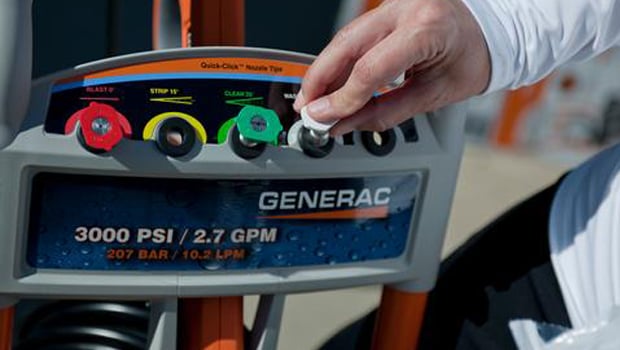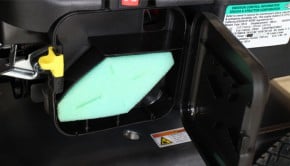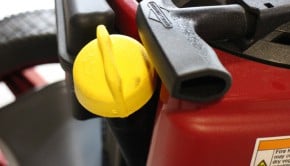Troubleshooting Your Pressure Washer
Warmer weather is on its way, so it’s time for some spring cleaning. You get your pressure washer out to do some outdoor washing, you try turning on the engine, and nothing happens.
Or, you are in position to start washing, you pull the spray-gun trigger, and water doesn’t come out.
First, step back and take a deep breath. Now let’s figure out how to troubleshoot your pressure washer.
Nozzle and Spray-gun Troubleshooting
Your nozzle and spray gun are two important parts in your pressure washer to deliver the high pressure water spray. If these parts fail to work, here are some tips on getting them back in shape:
- Inspect your nozzle, spray gun, connections and O-rings to make sure everything is tightened
- Check if the nozzle, spray gun or inlet screen are clogged. Wash out if they are.
- Replace O-rings if dirty or damaged.
- Inspect hose for any twist, cuts, bends or dents.
- Check your nozzle, hose, and spray gun for any clogs, dirt, and debris. Clean out or replace if needed.
Your Engine Won’t Start or is Lacking Power
If your gas-powered pressure washer engine does not start or is lacking power, there are a few things you can do.
First, check the on/off switch to see if it is in the “on” position. However, before you touch anything, turn the engine off! Even if it’s not running, turn the switch to the “off” position. You don’t want to inspect the engine while it is on, or could turn on, this could lead to serious injury and/or damage to the pressure washer engine.
After you make sure the engine is off, here are some ways to check if it is running properly:
- Run water through pressure washer until all air is removed from the hose.
- Check your air filter. Clean if dirty and replace if damaged.
- Check oil level. Change if needed.
- Top off fuel in tank
- If your fuel is more than 30 days old, dispose of it. Always use fresh gas.
- Make sure your spark plug is connected to the wire.
- If your engine was smoking:
- Check if choke is on, return to off position.
- Make sure there is an unrestricted air flow you’re your engine (clean your air filter).
If You Find a Leak…
A leak in a pressure washer may have you at your wits end. However, some easy preventative maintenance can eliminate this. If for some reason it happens, here are some things to look over:
- Inspect hose for any dents, cuts or twists, replace if damaged.
- Clean or replace O-rings, if that is where the leak is stemming from.
- Tighten all of your connections.
- Make sure you are using the proper wand size for your pressure washer.
- Clean filter screens on the water intakes, replace if damaged or broken.
Low Pressure Won’t Help You Clean
If the issue arises that your pressure washer isn’t providing you with the amount of pressure it should be, there are a few things that are easy to fix:
- Make sure your nozzle is the right size and installed properly.
- Ensure that your nozzle is not in low PSI position.
- Make sure your water supply is not restricted by anything (bends, cuts or damage to your garden hose).
- Look over your spray gun, nozzle and hose for any leaks.
- Check your nozzle, hose and spray gun for any clogs or dirt and debris. Clean out or replace if needed.
Unloader Valve
The unloader valve in the pressure washer is a very important part. This keeps the pressure from building up when you aren’t spraying water. If your engine is dieing after you are finished spraying it, or you are experiencing low pressure without being able to identify the cause, it could be your unloader valve. If the unloader valve isn’t replaced when suspected to be damaged or broken, this could lead to low pressure, safety hazards, and damage to your pressure washer.
In Conclusion:
Pressure washers are a great cleaning tool, if you keep them working properly. The majority of your pressure washer malfunctions should be a simple fix. Some preventative maintenance and occasional troubleshooting can keep your pressure washer in top shape and keep you cleaning without frustration.
Jack’s Safety Tips: Before servicing or repairing any power equipment, disconnect the spark plug and battery cables. Remember to wear appropriate safety glasses and gloves to protect against harmful chemicals and debris. View our Disclaimer.
Featured Parts and Products:







62 Responses to Troubleshooting Your Pressure Washer